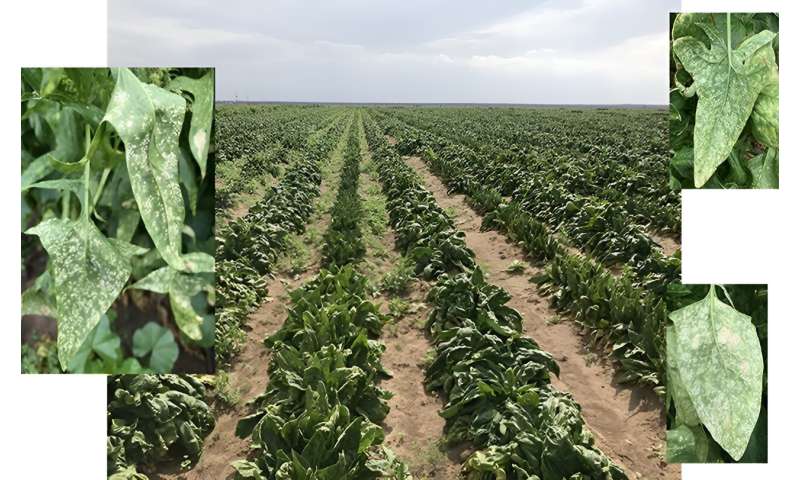Advancing spinach cultivation: Study explores white rust resistance using genomic approaches

White rust, caused by Albugo occidentalis, is a disease that poses a significant threat to spinach crops, especially in the U.S. Spinach, valued for its high nutrient content, faces yield and quality challenges due to this disease.
Recent advancements in genomics have enabled genome-wide association studies (GWAS) to identify genetic markers for white rust resistance. However, the genetics of resistance in spinach are not fully understood, and existing resistant varieties still face infection risks.
In March 2022, Horticulture Research published a research article titled "Genome-wide association study and genomic prediction of white rust resistance in USDA GRIN spinach germplasm." The study focuses on employing genomic prediction (GP) to improve breeding efficiency and develop cultivars with enhanced white rust resistance.
In this study, researchers evaluated the resistance of 346 spinach accessions to white rust. They recorded disease severity using a 0 to 10 scale, finding a skew towards higher severity due to widespread susceptibility. However, seven accessions displayed high resistance, making them ideal for breeding resistant cultivars.
Genetic diversity analysis among the 23 resistant accessions revealed two main clusters, with variations in genetic distance within country-specific groups.
For a broader understanding, principal component analysis (PCA) and phylogenetic analysis were conducted on the accessions using 8,399 randomly selected SNPs. This identified two distinct sub-populations.
The study then progressed to a genome-wide association study (GWAS) using both GAPIT 3 and TASSEL 5 models, which identified 40 SNPs associated with white rust resistance across various chromosomes. Notably, a major quantitative trait locus (QTL) was identified on chromosome 4, which is associated with white rust resistance. Additionally, a t-test for association was conducted, revealing dominance or recessiveness in selected SNP markers.
The study also identified candidate genes for white rust resistance. A total of 121 genes were located near the associated SNP markers, including 13 genes at 12 associated SNP regions with potential involvement in resistance.
Genomic prediction (GP) was another significant aspect of the study, exploring different ratios of training to testing sets, SNP numbers, and models. It was found that Bayesian LASSO (BL) and other models showed higher prediction accuracy compared to random BLUP and it is feasible to use GWAS derived SNP markers in GS to select white rust resistance.
In conclusion, the study successfully identified genetic markers and candidate genes associated with white rust resistance in spinach. This highlights the potential for combining marker-assisted selection (MAS) and genomic selection (GS) in breeding programs.
The findings are crucial for developing resistant spinach varieties, given the importance of this crop both economically and for its health benefits.
More information:
Ainong Shi et al, Genome-wide association study and genomic prediction of white rust resistance in USDA GRIN spinach germplasm, Horticulture Research (2022). DOI: 10.1093/hr/uhac069
Provided by Plant Phenomics